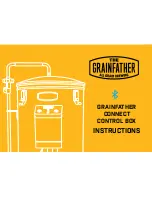
9
return air ducts as long as the following requirements are met:
• If using bottom discharge with return air ducts a roof curb
must be installed prior to unit installation. See Rigging and
Hoisting section for setting of the unit.
• Sufficient clearance for unobstructed airflow through the
outdoor coil must also be maintained in order to achieve
rated performance. See
for information about
locating the equipment.
Rooftop
Rooftop installations must be located according to local building
codes or ordinances and these requirements:
• The roof must be capable of handling the weight of the
unit. For unit weights, see
necessary.
• The appropriate accessory roof curb must be installed prior
to unit installation. The roof curb must be square and level
to ensure proper condensate drainage.
Please follow all
instructions provided with the kit
• Secure roof curb or frame to roof using acceptable
mechanical methods per local codes.
NOTE:
Make sure the
two supports beneath the unit have been removed.
Ground Level
Ground level installations must be located according to local
building codes or ordinances and these requirements:
• Clearances must be in accordance with those shown in
.
• A suitable mounting pad must be provided and be separate
from the building foundation. The pad must be level to ensure
proper condensate disposal and strong enough to support
the unit’s weight. The slab height must be a minimum of 2”
(5cm) above grade and with adequate drainage. See
• Remove and discard the horizontal Supply and Return duct
covers located on the rear of the unit. Form duct attachment
flanges by bending the sheet metal outward 90 degrees
along the perforated lines.
• Firmly attach ductwork directly to these flanges with
screws or other approved mechanical connections and
not to the Supply/Return air panels to avoid damage to
internal components of the equipment. Once completed
use approved duct sealing methods to ensure an air and
watertight seal is achieved.
Horizontal to Downflow Conversion
The unit is shipped ready for horizontal duct connections.
If down flow ducts are required, the unit must be converted
following the steps below for both the supply and return ducts.
1. Remove the horizontal duct cap.
2. Locate the duct cap inside the duct openings and remove
the screw holding it in place.
3. Lift the cap out of the unit. (
Hint:
The cap can be pushed
up from the bottom by reaching through the fork slot).
4. Cover the horizontal duct opening with the horizontal duct
cap. The insulation will be on the indoor side.
5. Fasten the cover with screws to seal.
6. Remove and discard the two wood supports beneath the
unit.
Condensate Drain
Condensate is removed from the unit through the 3/4” female
pipe fitting located on the front side of the unit. See
.
• A suitable air filter must be installed upstream of the
evaporator coil of the return air system. Refer to
for recommended external filter sizes.
• All return air must pass through the filters before entering
the evaporator coil. It is important that all filters be kept
clean and replaced frequently to ensure proper operation
of unit. Dirty or clogged filters will reduce the efficiency of
the unit and result in unit shutdowns.
• Air filter pressure drop must not exceed 0.08 inches WC.
Unconditioned Spaces
All duct work passing through unconditioned space must
be properly insulated to minimize duct losses and prevent
condensation. Use insulation with an outer vapor barrier. Refer
to local codes for insulation material requirements.
Acoustical Duct Work
Certain installations may require the use of acoustical lining
inside the supply duct work.
• Acoustical insulation must be in accordance with the current
revision of the Sheet Metal and Air Conditioning Contractors
National Association (SMACNA) application standard for
duct liners.
• Duct lining must be UL classified batts or blankets with a
fire hazard classification of FHC-25/50 or less.
• Fiber duct work may be used in place of internal duct liners if
the fiber duct work is in accordance with the current revision
of the SMACNA construction standard on fibrous glass
ducts. Fibrous duct work and internal acoustical lining must
be NFPA Class 1 air ducts when tested per UL Standard
181 for Class 1 ducts.
UNIT INSTALLATION
Packaging Removal
Remove the shipping carton and User’s Manual from the
equipment. For rooftop installations, remove and discard the
two supports attached beneath the unit.
Rigging & Hoisting
WARNING:
To avoid the risk of property damage, personal injury,
or death, it is the rigger’s responsibility to ensure
that whatever means are used to hoist the unit are
safe and adequate:
• The lifting equipment must be adequate for the
for unit weights.
• The unit must be lifted from the holes in the base
rails using cables or chains.
• Spreader bars are required to protect the unit and
ensure even loading.
• Keep the unit in an upright position at all times.
The rigging must be located outside the units
locating the center of gravity.
• All panels must be securely in place during rigging
and hoisting.
Clearances to Combustible Materials
These units are certified as combination heating and cooling
equipment for outdoor rooftop or ground level installations.
Units may be installed on combustible flooring or Class A,
B, or C roofing material when used with bottom supply and










































